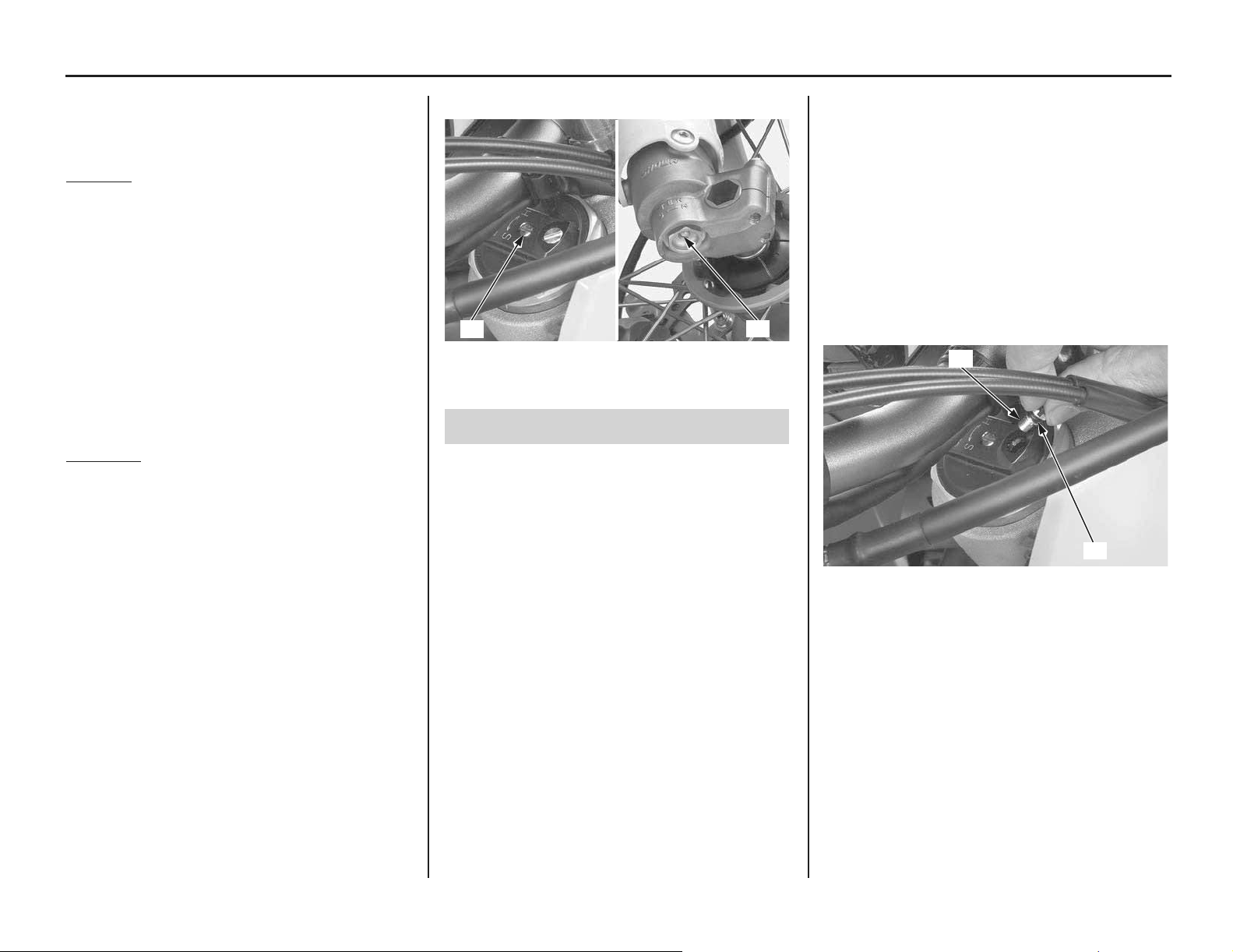Loading ...
Loading ...
Loading ...

Front Suspension Adjustments
Adjustments for Competition 135
Front Suspension Adjustments
The front suspension can be adjusted for the rider’s
weight and riding conditions by using one or more
of the following methods:
Left Fork
• Inner chamber air pressure — Adjusting the
left fork inner chamber air pressure adjusts the
spring rate of the entire range of fork travel.
• Outer chamber air pressure — Adjusting
the left fork outer chamber air pressure adjusts
the spring rate from the middle range to final
range of fork travel.
• Balance chamber air pressure — Adjusting
the left fork balance chamber air pressure
adjusts the spring rate of the initial range of
fork travel. Increasing the balance chamber air
pressure reduces the rebound of initial range of
fork travel. (softer)
Right Fork
• Compression damping — Turning the
compression damping adjuster (1) adjusts how
quickly the fork compresses.
• Rebound damping — Turning the rebound
damping adjuster (2) adjusts how quickly the
fork extends.
The inverted fork on your CRF features sealed
damper cartridges with dual (separate air and oil)
chambers to prevent aeration. The design also
isolates the oil in each fork/damper, which may
contain air bubbles and/or metal particles, from the
sealed cartridge to provide more consistent
damping.
Do not dispose of the fork; see your dealer.
Air is an unstable gas which builds up pressure as it
is worked (such as in a fork). Air pressure acts as a
progressive spring and affects the entire range of
fork travel. This means the fork action on your CRF
will get stiffer during a race. For this reason, release
built-up air pressure in the right fork leg between
motos. Be sure the fork is fully extended with the
front tire off the ground when you release the
pressure.
The standard air pressure is 0 psi (0 kPa, 0 kgf/cm
2
).
You may relieve accumulated air pressure in the right
fork leg by using the pressure release screws. The
front wheel should be off the ground before you
release the pressure. The air pressure should be
adjusted according to the altitude and outside
temperature.
1. Place a workstand under the engine, so that the
front wheel is off the ground.
Do not adjust air pressure with the front wheel
on the ground as this will give false pressure
readings.
2. Remove the pressure release screw (1).
3. Check that the O-ring (2) are in good
condition.
4. Install and tighten the pressure release screw to
the specified torque:
Right fork pressure release screw:
1.0 lbf·ft (1.3 N·m, 0.1 kgf·m)
(1) compression damping adjuster
(2) rebound damping adjuster
Right Front Suspension Air Pressure
Right fork:
(1)
(2)
(1) pressure release screw (2) O-ring
Right fork:
(2)
(1)
Loading ...
Loading ...
Loading ...